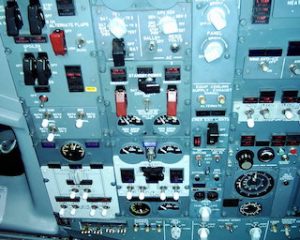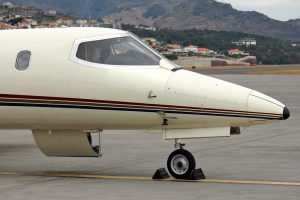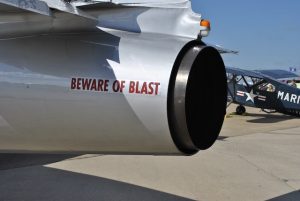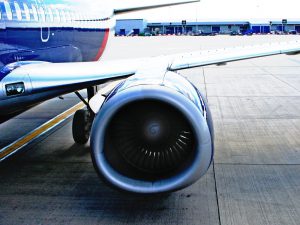Understanding Situational Awareness in Airline Pilot Standards (APS) Courses
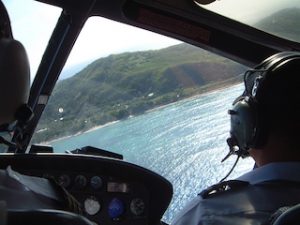 Situational awareness is a cornerstone of safety and efficiency in aviation, and it lies at the heart of training provided in Airline Pilot Standards (APS) courses. This article explores the critical importance of situational awareness in aviation, the key components taught in APS courses, and how pilots benefit from enhanced awareness in ensuring safe flight operations.
Situational awareness is a cornerstone of safety and efficiency in aviation, and it lies at the heart of training provided in Airline Pilot Standards (APS) courses. This article explores the critical importance of situational awareness in aviation, the key components taught in APS courses, and how pilots benefit from enhanced awareness in ensuring safe flight operations.
Importance of situational awareness in aviation
Situational awareness refers to the pilot’s ability to perceive, understand, and anticipate factors that affect the safety and efficiency of flight. In aviation, where split-second decisions can have profound consequences, maintaining situational awareness is paramount. It involves continuously monitoring the aircraft’s surroundings, understanding its position in relation to other aircraft, terrain, and weather, and predicting future developments.
Enhancing safety
One of the primary goals of situational awareness is to enhance safety. By being aware of potential hazards such as adverse weather conditions, traffic conflicts, or mechanical issues, pilots can take proactive measures to avoid risks. This proactive approach minimises the likelihood of accidents and incidents, ensuring the well-being of passengers, crew, and the aircraft.
Improving efficiency
In addition to safety, situational awareness also improves operational efficiency. Pilots who are aware of their aircraft’s position, fuel status, and air traffic conditions can make informed decisions to optimize flight routes, reduce fuel consumption, and maintain on-time performance. This efficiency not only benefits airlines in terms of cost savings but also enhances the overall passenger experience.
Key components of situational awareness training in APS course
APS courses provide comprehensive training on situational awareness, equipping pilots with the skills and techniques needed to maintain a high level of awareness throughout all phases of flight. The training covers several key components essential for effective situational awareness.
Perception
Perception forms the foundation of situational awareness. APS courses teach pilots to actively scan and observe their environment using visual cues, instruments, and sensory inputs. This includes monitoring the aircraft’s position, altitude, airspeed, and engine performance, as well as observing external factors such as weather patterns and nearby traffic.
Comprehension
Comprehension involves understanding the significance of the information gathered during the perception phase. APS courses teach pilots to analyze and interpret data, identifying potential hazards, threats, and opportunities. By understanding the implications of various factors on flight safety and efficiency, pilots can make informed decisions and take appropriate actions.
Projection
Projection refers to anticipating future developments based on the current situation. APS courses train pilots to project the trajectory of their flight, considering factors such as weather forecasts, airspace restrictions, and expected changes in traffic patterns. This forward-thinking approach enables pilots to plan ahead, adjust flight paths if necessary, and preemptively address potential challenges.
Decision-making
Effective decision-making is a critical component of situational awareness. APS courses teach pilots to evaluate options, prioritize actions, and choose the best course of action based on their situational understanding. Pilots learn structured decision-making models such as the DECIDE model (Detect, Estimate, Choose, Identify, Do, Evaluate) and the OODA loop (Observe, Orient, Decide, Act), which help streamline decision-making processes under time constraints.
Training techniques for enhancing situational awareness
APS courses employ various training techniques to enhance pilots’ situational awareness skills, ensuring they are well-prepared to handle dynamic and complex flight environments.
Simulation-based training
Simulation-based training is a cornerstone of APS courses, providing pilots with realistic scenarios that replicate actual flight conditions. In simulators, pilots can practice maintaining situational awareness in diverse scenarios, including adverse weather, equipment failures, and high-traffic airspace. This hands-on experience allows pilots to develop and refine their situational awareness skills in a controlled and safe environment.
Scenario-based learning
Scenario-based learning involves presenting pilots with hypothetical scenarios and challenging them to apply their situational awareness skills to make decisions and solve problems. APS courses use scenario-based learning to simulate realistic challenges that pilots may encounter during flight operations. By engaging in interactive exercises and discussions, pilots learn to recognise and respond to situational cues effectively.
Real-time feedback and debriefing
After completing training exercises, pilots receive real-time feedback and participate in debriefing sessions with instructors. These sessions provide valuable insights into their situational awareness performance, highlighting strengths and areas for improvement. By analysing their actions and decisions in hindsight, pilots gain a deeper understanding of situational cues and develop strategies for enhancing their awareness in future flights.
Integrating technology into situational awareness
Advancements in technology have revolutionised situational awareness in aviation, providing pilots with powerful tools and systems to enhance their awareness capabilities.
Advanced avionics systems
Modern aircraft are equipped with advanced avionics systems that provide pilots with real-time information on their surroundings, including weather conditions, traffic proximity, and terrain mapping. APS courses train pilots to interpret data from these systems effectively, enabling them to maintain situational awareness even in challenging conditions.
Weather radar and predictive tools
Weather radar and predictive tools allow pilots to anticipate weather patterns and avoid hazardous conditions. APS courses teach pilots how to use weather radar displays, satellite imagery, and weather forecasting tools to make informed decisions about route planning and deviations.
Traffic Collision Avoidance Systems (TCAS)
Traffic Collision Avoidance Systems (TCAS) are critical for maintaining situational awareness in congested airspace. APS courses cover the operation and interpretation of TCAS alerts, enabling pilots to take evasive actions and maintain safe distances from other aircraft.
Human factors in situational awareness
Human factors play a significant role in situational awareness, influencing pilots’ ability to perceive, comprehend, and project information effectively.
Fatigue management
Fatigue can impair situational awareness by affecting cognitive abilities and decision-making processes. APS courses include training on fatigue management strategies, such as adhering to rest requirements, implementing fatigue risk management systems (FRMS), and promoting healthy sleep habits.
Stress and workload management
Stress and high workload can reduce situational awareness and increase the risk of errors. APS courses teach pilots to manage stress effectively through techniques such as controlled breathing, mindfulness, and workload prioritization. By maintaining composure and focus, pilots can sustain situational awareness during challenging situations.
Communication and teamwork
Effective communication and teamwork are essential for maintaining situational awareness in a multi-crew environment. APS courses emphasise Crew Resource Management (CRM) principles, teaching pilots to communicate clearly, share information, and collaborate with colleagues to enhance situational awareness and decision-making.
Regulatory compliance and best practices
Situational awareness training in APS courses aligns with regulatory standards and best practices established by international aviation organisations and regulatory authorities.
International Civil Aviation Organization (ICAO) Standards
The International Civil Aviation Organization (ICAO) sets global standards for situational awareness training in aviation. APS courses ensure that pilots are familiar with ICAO guidelines and understand their role in maintaining situational awareness throughout flight operations.
Federal Aviation Administration (FAA) Regulations
In the United States, the Federal Aviation Administration (FAA) mandates specific training requirements for situational awareness and decision-making. APS courses include training on FAA regulations, ensuring that pilots meet the necessary standards and are prepared to apply situational awareness skills in accordance with FAA guidelines.
Industry best practices
In addition to regulatory standards, APS courses incorporate industry best practices for enhancing situational awareness. These practices are developed through collaboration among airlines, aviation organisations, and safety experts, ensuring that pilots receive training that reflects current industry standards and advancements.
Informed decisions under pressure
Situational awareness is a fundamental skill taught in Airline Pilot Standards (APS) courses, essential for maintaining safety, efficiency, and professionalism in aviation. By developing heightened awareness of their surroundings, understanding the implications of various factors, and making informed decisions under pressure, pilots can navigate the complexities of flight operations with confidence.
Through comprehensive training modules, simulation-based exercises, and integration of advanced technologies, APS courses equip pilots with the tools they need to sustain situational awareness in diverse and challenging environments. As aviation continues to evolve, the principles and practices taught in APS courses will remain integral, ensuring that pilots uphold the highest standards of situational awareness and contribute to a safer and more efficient aviation industry.


